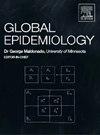An AI assistant for critically assessing and synthesizing clusters of journal articles
引用次数: 0
Abstract
Current large language models (LLMs) face significant challenges in attempting to synthesize and critically assess conflicting causal claims in scientific literature about exposure-associated health effects. This paper examines the design and performance of AIA2, an experimental AI system (freely available at http://cloud.cox-associates.com/) designed to help explore and illustrate potential applications of current AI in assisting analysis of clusters of related scientific articles, focusing on causal claims in complex domains such as epidemiology, toxicology, and risk analysis. Building on an earlier AI assistant, AIA1, which critically reviewed causal claims in individual papers, AIA2 advances the approach by systematically comparing multiple studies to identify areas of agreement and disagreement, suggest explanations for differences in conclusions, flag methodological gaps and inconsistencies, synthesize and summarize well-supported conclusions despite conflicts, and propose recommendations to help resolve knowledge gaps. We illustrate these capabilities with a case study of formaldehyde exposure and leukemia using a cluster of four papers that feature very different approaches and partly conflicting conclusions. AIA2 successfully identifies major points of agreement and contention, discusses the robustness of the evidence for causal claims, and recommends future research directions to address current uncertainties. AIA2's outputs suggest that current AI can offer a promising, practicable approach to AI-assisted review of clusters of papers, promoting methodological rigor, thoroughness, and transparency in review and synthesis, notwithstanding current limitations of LLMs. We discuss the implications of AI-assisted literature review systems for improving evidence-based decision-making, resolving conflicting scientific claims, and promoting rigor and reproducibility in causal research and health risk analysis.
用于批判性地评估和综合期刊文章集群的人工智能助手
目前的大型语言模型(llm)在试图综合和批判性评估科学文献中关于暴露相关健康影响的相互矛盾的因果关系主张方面面临重大挑战。本文研究了AIA2的设计和性能,AIA2是一个实验性人工智能系统(可在http://cloud.cox-associates.com/免费获得),旨在帮助探索和说明当前人工智能在辅助分析相关科学文章集群方面的潜在应用,重点关注流行病学、毒理学和风险分析等复杂领域的因果关系主张。在早期人工智能助手AIA1的基础上,AIA2通过系统地比较多个研究来确定一致和不一致的领域,提出结论差异的解释,标记方法上的差距和不一致,综合和总结有充分支持的结论,尽管存在冲突,并提出建议来帮助解决知识差距。我们用甲醛暴露和白血病的案例研究说明了这些能力,使用四篇论文的集群,具有非常不同的方法和部分矛盾的结论。AIA2成功地识别了主要的共识和争论点,讨论了因果主张证据的稳健性,并建议未来的研究方向以解决当前的不确定性。AIA2的产出表明,尽管目前法学硕士存在局限性,但目前的人工智能可以提供一种有前途的、可行的方法来辅助人工智能对论文群的审查,促进审查和综合的方法严谨性、彻全性和透明度。我们讨论了人工智能辅助文献综述系统在改善循证决策、解决科学主张冲突、促进因果研究和健康风险分析的严谨性和可重复性方面的意义。
本文章由计算机程序翻译,如有差异,请以英文原文为准。
求助全文
约1分钟内获得全文
求助全文

 求助内容:
求助内容: 应助结果提醒方式:
应助结果提醒方式:


